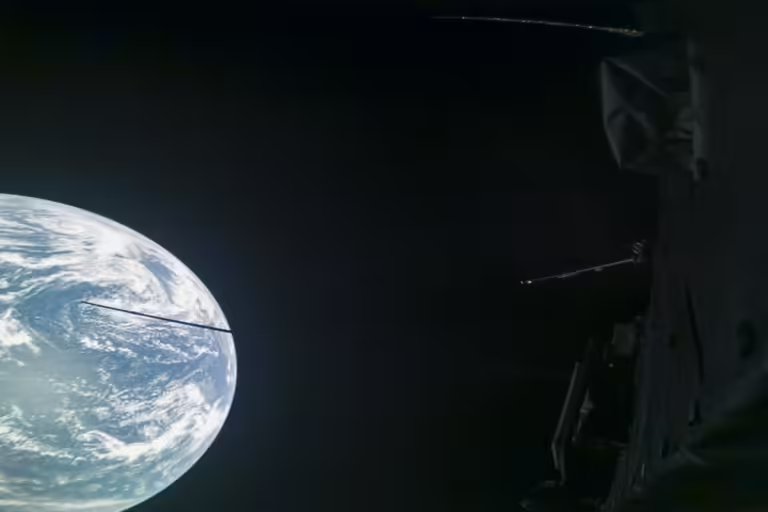The Jupiter probe recently completed the first-ever double-world flyby, capturing beautiful images of the Moon and Earth as it zipped through the inner solar system.
The European Space Agency (ESA) has released footage of JUICE’s Moon-Earth flyby, during which the spacecraft headed toward Venus on its way to the Jupiter system. The 1.5-minute video shows JUICE approaching the Moon, flying past its cratered surface and into the darkness of space before the blue hues of Earth appear in the frame.
The Jupiter probe JUICE used the gravity of the Moon and Earth to navigate its perilous trajectory toward Venus on August 19 and 20. “The gravity-assisted flyby went flawlessly, everything went without a hitch, and it was exciting to see JUICE return so close to Earth,” Ignacio Tanco, JUICE spacecraft operations manager, said in a statement.
The footage was captured by JUICE’s two surveillance cameras designed to monitor the spacecraft’s boom and antenna. The Moon and Earth flybys also gave ground controllers the opportunity to test JUICE’s science instruments; all ten instruments were turned on during the Moon flyby, and eight were turned on during the Earth flyby.
“The timing and location of this double flyby will allow us to thoroughly study the behavior of JUICE’s instruments,” Claire Vallat, JUICE’s operational scientist, said in a statement. “Because it occurs early in JUICE’s journey, we can use the data to prepare our instruments for their arrival at Jupiter. It’s also the perfect place to understand how our instruments will react to real-world targets, given that we know very well the physical properties of the Earth, Moon, and the surrounding space environment.”
The spacecraft is on an eight-year journey to Jupiter to explore whether its icy moons could be habitable. Using the gravity of the Moon and Earth, JUICE changed its speed and direction to alter its orbit. The Moon flyby increased the spacecraft’s speed relative to the Sun by 0.5 miles per second (0.9 kilometers per second), heading toward Earth. After approaching Earth, JUICE’s speed relative to the Sun decreased by 2.9 miles per second (4.8 kilometers per second), setting it on a new orbit toward Venus.
The spacecraft will orbit Venus in August 2025 before returning to Earth, after which JUICE will make two more flybys of its home planet, in September 2026 and January 2029. JUICE’s maneuvers within the solar system are designed to put it on the right trajectory and reach the right speed to enter Jupiter’s orbit in 2031.
JUICE was launched from the European Spaceport in French Guiana in April 2023. Just hours after liftoff, the spacecraft captured the first moments of a 12-year mission dedicated to studying Jupiter’s three icy moons: Europa, Ganymede and Callisto.
moreJUICE spacecraft sends farewell photo of Earth on its way to Jupiter

